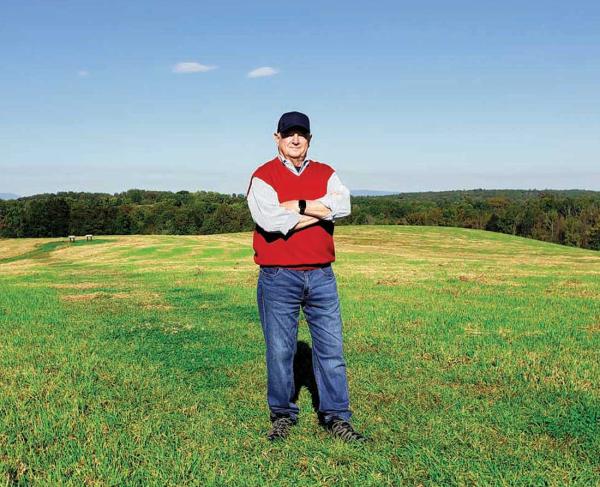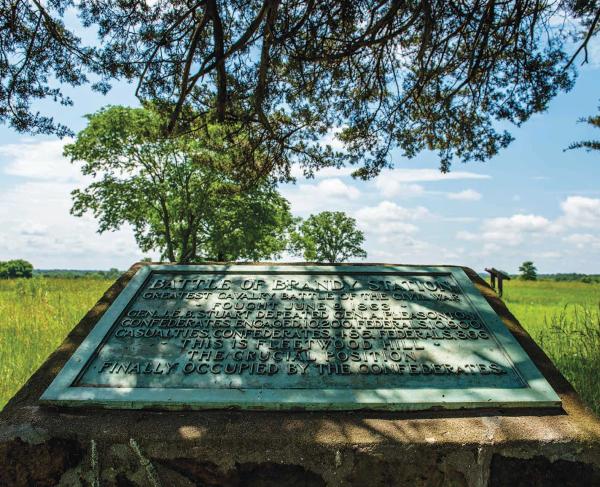Michelle Rowley-Welsch

Michelle Rowley-Welsch teaches 8th grade American History at Bexley Middle School, Ohio. This is her fifteenth year of teaching. She especially enjoys working with middle school students. The American Battlefield Trust selected Michelle as the American Battlefield Trust Preservationist Teacher of the Year for the 2006-2007 school year. In addition, Michelle has participated in teaching conferences at the United States Holocaust Memorial Museum, the Freedom Center, Ohio Historical Society, Ohio State Bar Association, and the 400th Anniversary at Jamestown.
Michelle and her students set a lofty goal for the 2008-2009 school year: they wanted to raise the $4900 necessary to preserve one full acre at Fleetwood Hill (Brandy Station Battlefield). Instead, they surpassed their goal, raising $5000!
Q: Can you describe you philosophy of teaching?
MRW: Teaching needs to be interactive. Students need to be involved and feel a pull toward what is being taught. They need to feel that the events they are learning about are important to them and to their lives. I also think that if students are given the opportunity to view events from different points of view they can evaluate and construct their own theories about events in history and their ramifications.
Q: What made you decide to become a teacher?
MRW: I had a great experience with my own teachers. There were two high school teachers (one English, one American History) who really impacted me. Also, my mother volunteered and worked in education for years and I knew the impact she had on students. I really wanted a career that would let me work with students and let me pursue and share my love of history. My students know I am committed to the subject and the people I am teaching about. The more I teach, the more I want to learn.
As a child my parents took me to battlefields, museums, battle ships, historic homes, etc. I had a real picture of the importance of smaller, lesser known sites like canal locks in Ohio, or large sites like Colonial Williamsburg or Gettysburg National Military Park. As I grew older I became more aware of the profound sacrifices made by people in the past. It seemed sad that their memories might fade away. I think that is why it is so important to teach history and to preserve it wherever we can.
Q: Who are your favorite figures in American History?
MRW: I love to teach about George and Martha Washington and their complex lives. They are so very interesting and much more than the stereotypes people have. Alexander Hamilton’s story is fascinating. It’s a shame so many people overlook him in history. Tecumseh’s accomplishments and demise in the War of 1812 are very important. I love to read about Abraham Lincoln and his life, his family, his election, his cabinet.
My favorite Civil War characters are hard to pin down. Since I live about 20 miles from both General Sherman and General Sheridan’s homes, I definitely have to say those two - and Grant. As someone who loves Early American history, of course I enjoy Robert E. Lee – not just because of what he did in the Civil War, but because of the lineage of the Lee Family and his connection to the Washingtons. I also love Joshua Lawrence Chamberlain, and find James Longstreet so interesting! There are many more.
Q: How do you make history relevant and exciting to your students?
MRW: I like to tell stories about the people - read journal or autobiography excerpts, and let students see people in history as real men and women who did extraordinary things, sometimes in little ways. I try to help them view famous historical figures as real people. Conversely, I try to highlight individual stories which show common people experiencing history as “unknowns,” yet show their impact on history. (Reading excerpts from Sam Watkins’ Company Aytch, for instance, shows the personal experiences of someone closer to their age, someone to whom they can relate.)
We visit interactive web sites as a whole class (on the SmartBoard) or individually. There are great virtual tours of historic sites and interviews online. We do “hands on” activities with artifacts, archaeology projects, projects that the students create using technology. We use technology a great deal because there is so much out there and the students are very tech-savvy. I use our text book as a base, but there is so much to supplement it.
Q: What challenges do you meet in regard to state standards?
MRW: All of my overall unit plans are designed with state standards in mind. The hardest part is when there are things which are not in the standards yet need to be taught. I have to plan far ahead and adjust my timing to allow for this, especially some of the extra enrichment activities that are so valuable. I also need to allow flexibility for opportunities to come up! Also, because our Ohio Achievement Tests take place at the end of April, it means that we could be reviewing topics before they have been taught. Luckily, with the Battlefield preservation theme throughout the year, we learn a lot about the Civil War and the Abolitionist movement long before we get to their place in the text.
Q: How did you become involved in battlefield preservation?
MRW: I have always been very interested in the preservation of historical sites because of the “presence” you feel when you are actually there: experiencing the land, the landscape, the buildings. These are the same things participants in the historical events saw and felt.
I had been interested in Colonial Williamsburg and Gettysburg for a long time. In college I joined the Friends of Gettysburg and really became interested in their preservation efforts. I travel to Jamestown about once a year and bring back photos of the progress the archaeologists have made there. What if that land had not been preserved? What if they hadn’t tried to explore it more thoroughly in the 1990s?
After joining CWPT a few years ago, I read about the battlefield program for schools and thought that this might be a way for our school to make a difference even though we are far from most of the battlefields. This was something in which we could participate fully.
Q: How do you incorporate preservation into your teaching?
MRW: I start with preservation efforts at Jamestown. We talk about some of the Native American historic sites near us which have been preserved (Great Serpent Mound) and some that have been virtually destroyed. There is a great deal of urban sprawl in the areas around Columbus. I connect this visual idea with the development that is taking place in Tennessee and Virginia. So much battlefield land there is being lost.
Over the course of the school year we go back and forth between one or two endangered Civil War battlefields and other types of preservation (Valley Forge, etc.). By focusing on one or two sites the students really connect to their importance while we are fundraising. The theme of preservation is year-long and integral to most events we are studying.
Q: Do you have any advice for other teachers?
MRW: I suggest that established teachers continue to experience a variety of education and history conferences and classes, both in the classroom and online. Also, I cannot stress enough the value of traveling to the places we teach about, when possible. Choose large and small, famous and less notable sites. That is a great education for the teacher and will be passed down to the students.
Don’t be afraid to show your passion for history to your students. Students want to know why you care about these events, these people. Take pictures of your travels and show them the things you have brought home. Read as many books from different historical viewpoints as possible, and put the really good ones on display in your classrooms (even read from them occasionally). Some of my students have asked to read them. I enjoy teaching history, and I enjoy when my students are really connected to the history I love.
Help raise the $429,500 to save nearly 210 acres of hallowed ground in Virginia. Any contribution you are able to make will be multiplied by a factor...


